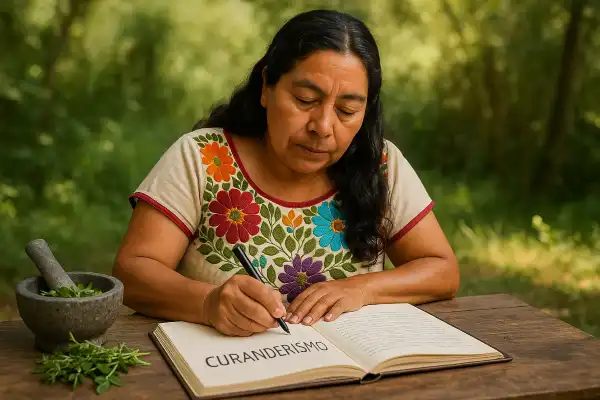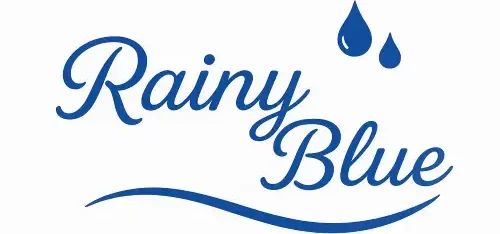How to practice curanderismo remains one of the most profound questions asked by those seeking to reconnect with their ancestral healing wisdom. Many feel drawn to this sacred path yet wonder where to begin their journey into the ancient medicine ways that have sustained our communities for centuries. The calling often comes through dreams, through the whisper of plant spirits, or through the deep knowing that our bodies and souls remember what our minds have forgotten.
María del Pilar Fernández believes that curanderismo is not merely a practice to be learned but a sacred trust to be awakened within us. Through her years of study and apprenticeship with curanderas across Mexico, she understands that this healing tradition calls to those who are meant to serve as bridges between the earthly and spiritual realms, offering guidance to seekers who feel the ancient medicine stirring in their hearts.
For broken hearts, you should read “Can curandera heal heartbroken people?”
How to practice curanderismo?
Curanderismo is a traditional healing practice that encompasses the body, mind, and spirit, rooted in indigenous Mexican traditions combined with Spanish, African, and other cultural influences. To practice curanderismo authentically requires dedication, respect for the tradition, and often a spiritual calling known as “el don” – the gift.

Understanding the foundation of curanderismo
Traditional Mexican healers, known as Curanderos, typically come to their vocation through spiritual calling or family lineage, believing that God or a higher power grants them divine knowledge and healing skills. The practice rests on the understanding that healing must address three interconnected realms: the physical body, the emotional and mental state, and the spiritual essence of a person.
Before embarking on this path, one must cultivate deep reverence for the indigenous wisdom that gave birth to these healing arts. Curanderismo practitioners believe they have been given the gift of healing to promote both physical and spiritual health in their patients. This sacred responsibility cannot be taken lightly, as it involves working with energies that affect not only individuals but entire communities.
Beginning your journey through apprenticeship
Traditional learning occurs through multi-year apprenticeships with practicing healers, where knowledge is passed down orally from master to student. The most authentic way to learn curanderismo is by finding an experienced curandera or curandero willing to share their knowledge. This relationship often develops naturally through community connections or through sincere seeking.
During apprenticeship, students learn not only the technical aspects of healing but also develop their intuitive abilities and deepen their connection to the spirit world. Curanderos typically have unique practices formed over many years within their family, tribe, or community context, trained by other curanderos, shamans, elders, or specific teachers. The apprentice learns to work with medicinal plants, understand energy flow, and perform various healing rituals under careful guidance.
Modern seekers can also explore formal educational opportunities. The University of New Mexico offers comprehensive courses on curanderismo, covering traditional healing using plants, body work, and spiritual practices. While these courses provide valuable foundational knowledge, they supplement rather than replace traditional apprenticeship methods.
Essential practices and techniques
The path of curanderismo encompasses numerous healing modalities that work together to restore balance and harmony. Students must develop proficiency in several key areas:
Herbal medicine and plant spirits: Traditional healers share knowledge of healing properties of plants commonly found in the Southwestern United States and Mexico through practical applications including water-based microdosis, alcohol-based tinctures, juice therapy, oils, and smoke preparations. Learning to work with plants requires understanding not only their medicinal properties but also their spiritual essences and how to approach them with proper respect and ceremony.
Limpias and spiritual cleansing: Limpias are Mexican spiritual cleansing rituals that cleanse body, emotions, mind, and soul from negative energies or thoughts, traditionally used to remove blockages and attract positive qualities like happiness, love, health, and abundance. These powerful ceremonies can be performed using various tools including plants, crystals, eggs, incense, candles, and sacred waters.
Sobada and bodywork: Sobaderismo treatments release various kinds of wounds – emotional, spiritual, mental, and physical – that may be stuck in the cellular body, spirit, and soul, as loving touch tends to melt hardness and stubbornness. This therapeutic massage work requires learning specific techniques while developing sensitivity to energy flow and blockages within the body.
Sacred ceremony and ritual: Creating and maintaining sacred space forms the foundation of all curanderismo work. Practitioners learn to call in the four directions, work with fire ceremonies, and conduct various healing rituals that connect the earthly and spiritual realms.
Developing your gifts and calling
Many curanderos do not pursue their profession for profit because they believe healing is a gift from a higher power, referring to this as “developed abilities.” Those called to this path must cultivate their natural intuitive abilities through meditation, dreamwork, and constant communion with the spirit world.
Regular spiritual practices such as prayer, offering ceremonies, and time spent in nature help strengthen the connection between the practitioner and the healing forces they work with. Many curanderas report receiving guidance through dreams, visions, or direct communication with plant spirits and ancestral guides.
The development of healing abilities often accelerates through personal healing experiences. Many curanderas first encounter this medicine when seeking healing for themselves or their families, discovering their own gifts through the process of being healed.
Ethical considerations and responsibilities
Practicing curanderismo carries profound responsibilities to the community and to the tradition itself. Healers must maintain strict ethical standards, including:
- Never using healing abilities to harm others
- Maintaining confidentiality about clients’ conditions and healing sessions
- Charging fair prices that make healing accessible to those in need
- Continuing to learn and grow in their practice throughout their lives
- Respecting the indigenous origins of the tradition and giving credit where it is due
Modern curanderas are preserving this everyday magic for future generations, keeping alive traditional healing practices that have been suppressed by dominant culture. Those who practice must understand they serve as guardians of ancient wisdom, responsible for passing these teachings to worthy students while protecting them from exploitation or misappropriation.
Integration with modern healing
Contemporary practitioners often blend traditional curanderismo with modern healing approaches. Many curanderas encourage thoughtful inclusion of traditional indigenous healing practices alongside conventional medical treatments when appropriate. This integration requires wisdom to know when traditional methods are sufficient and when modern medical intervention is necessary.
The practice continues to evolve while maintaining its essential core, adapting to serve communities in new environments while preserving the sacred principles that make it effective. Curanderismo represents a holistic form of traditional medicine that heals body, mind, and spirit through various approaches including herbal remedies, massage, spiritual cleansing, and the combining of elements around us.
Disclaimer
Please note that Maria is not a physician, psychologist, or nurse. These culture-specific spiritual healing services are not meant to replace medical or psychological diagnosis and treatment. It is recommended that you see a licensed physician or licensed health care professional for any physical or psychological ailment you may have.
Several years ago, María worked with Sofia, a young mother who came to her suffering from what the doctors called chronic fatigue but which María recognized as a deep spiritual exhaustion known as “alma cansada” – tired soul. Sofia’s energy had been scattered through years of caring for others while neglecting her own needs. María began Sofia’s healing with a series of limpias using fresh basil and rosemary to clear accumulated negative energy, followed by sobada sessions to release tension held in her body. The most important part of Sofia’s treatment was teaching her to create daily rituals of self-care and boundary-setting that honored her role as both mother and woman. Through months of working together, combining herbal teas, energy cleansing, and guidance on reclaiming her personal power, Sofia gradually restored her vitality and learned to maintain the balance between giving and receiving that is essential for sustainable healing. She now practices simple limpias for her own family and has become a bridge between traditional wisdom and modern life in her community.
